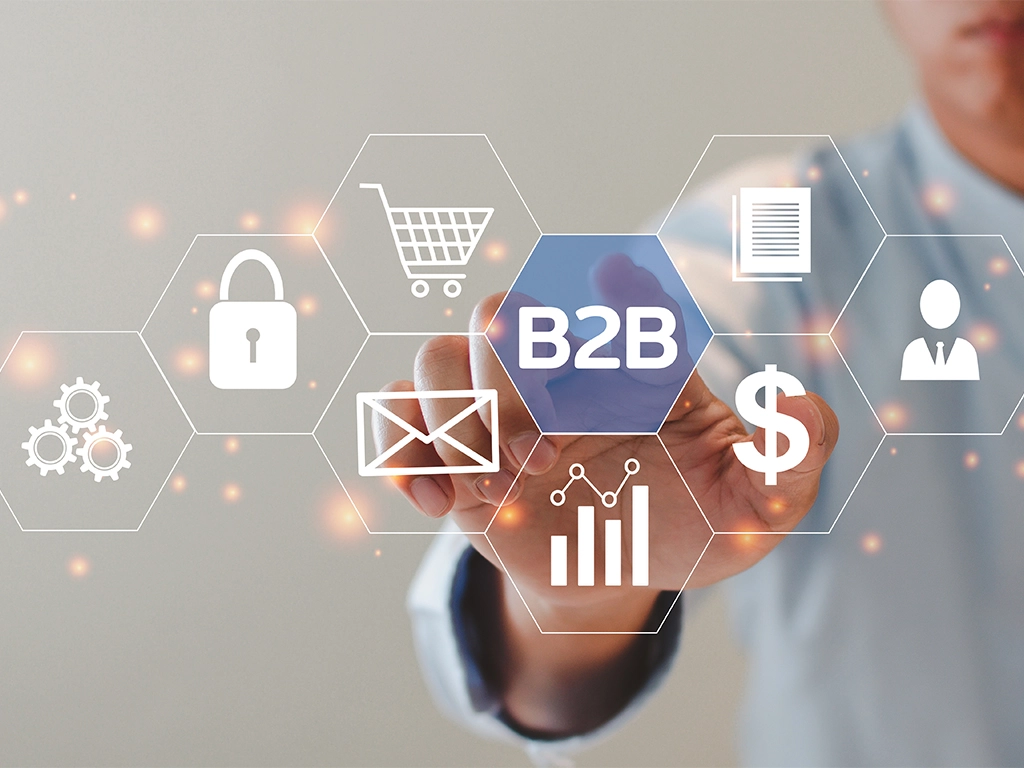What Are The B2b Marketing Pricing Strategies?
Selling to other businesses is different from selling to consumers and one of the challenges you face is determining the price technique use.

As we enter a new year, 2023, all businesses have begun planning and budgeting for the rest of the year, considering all the areas that still require improvement and those that will prosper in the days to come. While you design your plans, one concern that will undoubtedly cross your mind is, “How do I pick pricing methods?”. Have you ever considered that are B2B pricing strategies appropriate for the typical consumer?
It’s true that setting the pricing for a B2B product can be difficult since companies must consider all aspects of selling.
Selling to various businesses is a whole different game than selling to consumers, thus it surely calls for more intricate techniques and work than B2C pricing. The key to a profitable business is having a perfect pricing plan. Pricing decisions and marketing strategies will be influenced by a thorough grasp of your target market and the factors that led them to choose your goods.
Here is a route map on B2B pricing strategies that will assist you in choosing the right one for your company.
What is B2B Sales Pricing?
B2B pricing refers to the pricing strategies and tactics used by businesses when selling products or services to other businesses. B2B transactions are typically larger and more complex than B2C transactions, and the buying process is often more structured and involves multiple decision-makers. As a result, B2B pricing strategies are often more nuanced and tailored to meet the specific needs and budget constraints of each individual business customer. Some common B2B pricing models include volume discounts, tiered pricing, subscription-based pricing, and negotiated pricing.
Why is Getting Your B2B Pricing Strategy Right Important?
Your B2B pricing has a significant impact on how much money your business makes. If you set your prices too low, you’ll need to win a sizable share of your total addressable market in order to reach your objectives. Going overboard will turn off clients with lesser wallets. Therefore, getting B2B pricing right is important for several reasons:
- Customer retention: Offering competitive prices can help to retain existing customers and attract new ones.
- Market positioning: Pricing can play a crucial role in how a business is perceived in the market and can impact its overall brand image.
- Sales and revenue: Pricing can directly impact a business’s sales and revenue, as it can influence the number of customers who are willing to purchase a product or service.
- Cost structure: Pricing must be aligned with the cost structure of a business, otherwise it will lead to losses in the long run.
- Sales process: Pricing can also affect the sales process, as it can influence how long it takes to close a sale, and how much negotiation is required.
- Strategic decisions: Pricing is a key element in any business strategy, and it can influence the direction of the company.
The Different B2B pricing Models
There are several B2B pricing models that businesses can use, including:
- The Flat-Rate Pricing Model: Offering a single product with the same set of features for a single price is known as flat-rate pricing. It is simple to sell and explain this model. Sales and marketing may concentrate on a single, well-defined proposition. However, flat-rate pricing stops you from generating the most money. Flat-rate pricing often only works for businesses with a single product and modest income.
- User-based Pricing Model: The practice of charging companies in the B2B sector depending on the number of users is common. Depending on whether there are more or fewer users, the pricing range changes. An instant messaging service could charge a particular amount for the first 100 users, and when the number of users exceeds 100, the price likewise rises.
- Dynamic Pricing Model: Dynamic pricing model aims to consider all elements that might influence how much customers will spend at any given time. This covers supply and demand, price from rival businesses, and whatever other information you can gather to feed the algorithms. Predicting the ideal price at any given time is significantly more accurate with contemporary machine learning than it was previously.
- Competitor-based Pricing Model: A competitor-based pricing model involves setting prices in accordance with those of rivals. To use this pricing methodology, a company must determine the average price of all its rivals. After that, the brand may decide whether to maintain the current pricing or change the average price by a little amount. The idea behind this price approach is that you are delegating all the labor-intensive tasks to your rivals and trusting on the accuracy of their pricing judgment.
6 Common B2B Pricing Mistakes
It’s simple to overlook pricing trends. This region appears to be undiscovered and unexplored to many people. We frequently place the incorrect priorities first, such as lowering expenses and raising margins. These are a few of the most typical flaws in B2B pricing strategies.
When selling to corporate clients, it is crucial to have a well-thought-out pricing plan in place (B2B). Failure to do so may result in lost sales opportunities and lower earnings. Unfortunately, a lot of businesses misjudge their B2B pricing strategies, undervaluing their services and goods or overcharging their clients. To help ensure that you are getting the most out of your pricing strategies and avoiding common mistakes, here are some tips on how to avoid common B2B pricing strategy mistakes.
- Not understanding your cost structure: Not having a clear understanding of your own costs can lead to pricing that is too low, resulting in lost profits.
- Ignoring competition: Failing to consider the prices of competitors can lead to pricing that is too high or too low.
- Not considering the value to the customer: Focusing solely on the cost of the product or service without considering its perceived value to the customer can lead to pricing that is not competitive.
- Not segmenting the market: Not segmenting the market and tailoring pricing to different segments can lead to lost sales and missed opportunities.
- Not considering the buying process: Not understanding the buying process of your target customers can lead to pricing that is not aligned with their decision-making process.
- Not monitoring and adapting pricing: Failing to monitor and adapt pricing over time can lead to pricing that is no longer competitive in the market.
What Are the B2B Marketing Pricing Strategies?
Let’s talk about the B2B Marketing pricing strategies, now that we have already discussed its different models and many more. When selling to other businesses, firms can use a variety of pricing tactics, but the four options below are the most popular ones. Let’s go through each of them and talk about the reasons a company would choose for, or decide against, a specific pricing approach.
1. COST-PLUS PRICING STRATEGY
Cost plus pricing is a pricing strategy used in B2B transactions where a company adds a markup to the cost of a product or service in order to determine the final selling price. This markup, which is often a percentage of the price, serves to both make a profit and pay for overhead and other costs. This tactic is frequently employed in sectors like manufacturing or construction when the cost of goods or services is somewhat predictable and consistent.

Some pros of using a cost-plus pricing strategy include:
- It’s relatively easy to understand and implement, as the price is based on a simple calculation of adding a markup to the cost of the product or service.
- It helps ensure that a company will cover its costs and make a profit.
- It can be used in industries where the cost of goods or services is relatively stable and predictable.
However, there are also some cons to consider:
- It may not take into account market conditions or competition, leading to prices that are too high or too low.
- It may not account for variations in the cost of raw materials or other inputs, leading to incorrect pricing.
- It can lead to lower sales if customers feel that the prices are too high.
- It may not account for the added value that a company can bring to a product or service, leading to under-pricing.
This pricing method should only be used when:
- You don’t have enough time to investigate the market, your customers, or your competitors.
- You should pay greater attention to your company’s other components, such as shipping and marketing.
- The pricing competition for your product line is not very varied.
Furthermore, SaaS enterprises cannot use this B2B pricing model because the benefits of the product/service already outweigh the cost of production.
2. COMPETITIVE PRICING STRATEGY
Due to its ease, the competitive pricing approach is one that is widely applied in the market.
A corporation that uses a competitive pricing strategy bases its pricing decisions on those of its rivals. This strategy is often used in industries where there is intense competition and prices are similar across different companies. The goal of using this strategy is to remain competitive in the market and to attract customers by offering prices that are comparable or lower than those of the competition.

This B2B pricing method is frequently used, and in most situations, it is quite accurate, to assess how competitively priced a product is in comparison to its rivals.
This strategy has a few pros, such as:
- It allows a company to remain competitive and attract customers by offering similar or lower prices than its competitors.
- It can help a company maintain its market share in a highly competitive market.
- It can be useful for companies that are new to a market and want to establish themselves quickly.
However, there are also some cons to consider:
- It does not take into account the value that a company can bring to a product or service, leading to under-pricing.
- It can lead to price wars and margin erosion if every company in the market adopt this strategy
- It can be hard to maintain a competitive pricing strategy if a company’s costs are significantly higher than those of its competitors.
If you are not careful, you may miss the opportunity to make more profits or simply get caught up in the price race of B2B marketing.
3. VALUE-BASED PRICING STRATEGY
Value-based pricing strategy is a pricing strategy where a company sets its prices based on the perceived. Value that its products or services offer to customers, rather than on the cost of the product. Service or the prices of competitors this strategy is based on the idea that customers are willing to pay. More for a product or service that they perceive as providing greater value.

Based on the worth of the goods and the price that the client is willing to pay, the pricing would be appropriately determined.
This strategy has a few pros, such as:
- It allows a company to charge premium prices for products or services that are perceived as high value by customers.
- It can help a company differentiate itself from competitors and establish a premium brand.
- It can lead to higher profit margins, as customers are willing to pay more for products or services they perceive as providing greater value.
However, there are also some cons to consider:
- It can be difficult to accurately determine the perceived value of a product or service, which can lead to incorrect pricing.
- It can be difficult to change prices if the perceived value of a product or service changes over time.
- It may not be effective in highly price-sensitive markets, where customers are mainly looking for the lowest price.
Data quality, preparation time, and monitoring procedures are three things you must guarantee.
- To obtain the most accurate B2B customer insights, you must complete a survey due to data quality.
- Time is essential because the crawl will take a while to complete.
- To ensure that the study information is secure and can be used continuously, the monitoring method must be thorough.
You must create an individual profile for each consumer in order to ascertain their fair pricing in order to obtain the proper price.
4. DYNAMIC PRICING STRATEGY
Dynamic pricing strategy is a pricing strategy where a company adjusts its prices based on real-time market. Conditions, such as changes in demand, competition, and other factors. This tactic is widely employed in sectors where prices might change regularly. Such retail, e-commerce, and the travel sector with modern machine learning, predicting the optimal price. At any given time is much more accurate than it was in the past.

Opposed to static pricing, dynamic pricing helps your business maximize profit by operating at multiple price points.
Dynamic pricing can be achieved through different methods, such as:
- Time-based pricing: Adjusting prices based on the time of day, week, or year. For example, raising prices on weekends or during peak travel seasons.
- Inventory-based pricing: Adjusting prices based on the availability of a product or service. For example, raising prices when inventory is low, or demand is high.
- Location-based pricing: Adjusting prices based on the location of a customer. For example, charging higher prices for customers in more affluent areas.
- Personalized pricing: Adjusting prices based on the specific characteristics of a customer, such as their purchase history, browsing behavior, or demographics.
Some pros of using dynamic pricing strategy include:
- It allows a company to respond quickly to changes in market conditions and capitalize on periods of high demand.
- It can help increase revenue and profit by charging higher prices when demand is high and lowering prices when demand is low.
- It can help prevent price wars and maintain profit margins.
However, there are also some cons to consider:
- It can be difficult to implement and maintain, as it requires real-time data and sophisticated pricing algorithms.
- It can be difficult to predict how customers will respond to dynamic pricing and how it will impact sales.
- It can be perceived negatively by customers if they feel that they are being charged more than others for the same product or service.
Wrapping It Up
The first step in the growth process should be the selection of a sizable price plan. Once you’ve got your price down, the game has just begun. Businesses should concentrate on obtaining a sales enablement solution that offers real-time. Information into clients’ behavioral patterns in addition to examining the pricing models discussed above. Sales representatives and marketers will then be able to determine what the clients are willing to spend.
We’ve discussed will be a great recommendation for you when you finalize your product price.



